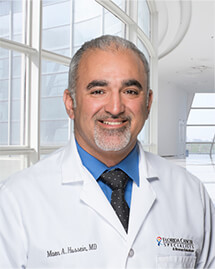Author(s): Eleftherios P. Mamounas, M.D.1; Hanna Bandos, Ph.D.2,3; Julia R. White, M.D.4; Thomas B. Julian, M.D.5; Atif J. Khan, M.D.6; Simona F. Shaitelman, M.D.7; Mylin A. Torres, M.D.8; Frank A. Vicini, M.D.9; Patricia A. Ganz, M.D.10,11; Susan A. McCloskey, M.D.12; Peter C. Lucas, M.D., Ph.D.13,14,15,16; Nilendu Gupta, Ph.D.17; X. Allen Li, Ph.D.18; Beryl McCormick, M.D.6; Benjamin Smith, M.D.7; Rahul D. Tendulkar, M.D.19,20; Vivek S. Kavadi, M.D.21; Koji Matsumoto, M.D.22; Samantha Andrews Seaward, M.D.23; William J. Irvin, Jr., M.D.24; Jolinta Y. Lin, M.D.8; Robert W. Mutter, M.D.25; Thierry M. Muanza, M.Sc.26; Jannifer Stromberg, M.D.27; Reshma Jagsi, M.D., Ph.D.8; Anna C. Weiss, M.D.28; Walter J. Curran, Jr., M.D.29; Norman Wolmark, M.D.14,15,30;
Author Affiliations
1AdventHealth Cancer Institute, Orlando, FL; 2NRG Oncology Statistical and Data Management Center, Pittsburgh; 3University of Pittsburgh School of Public Health, Department of Biostatistics and Health Data Science, Pittsburgh; 4University of Kansas Medical Center Comprehensive Cancer Center, Kansas City; 5Allegheny Health Network Cancer Institute, Pittsburgh; 6Memorial Sloan Kettering Cancer Center, New York; 7University of Texas M.D. Anderson Cancer Center, Houston; 8Winship Cancer Institute, Emory University School of Medicine, Atlanta; 9Michigan Healthcare Professionals, Pontiac; 10Jonsson Comprehensive Cancer Center, University of California, Los Angeles, Los Angeles; 11UCLA Fielding School of Public Health, Los Angeles; 12University of California, Los Angeles, Los Angeles; 13National Surgical Adjuvant Breast and Bowel Project Pathology Lab, Pittsburgh; 14University of Pittsburgh Medical Center Hillman Cancer Center, Pittsburgh; 15University of Pittsburgh School of Medicine, Pittsburgh; 16Department of Laboratory Medicine and Pathology, Mayo Clinic, Rochester, MN; 17Ohio State University, James Cancer Hospital, Columbus; 18Medical College of Wisconsin, Milwaukee; 19Case Western Reserve University Case Comprehensive Cancer Center, Cleveland; 20Taussig Cancer Center, Cleveland Clinic, Cleveland; 21Texas Oncology, US Oncology Network, The Woodlands; 22Hyogo Cancer Center, Akashi, Hyogo, Japan; 23Kaiser Permanente National Cancer Institute Community Oncology Research Program, Vallejo, CA; 24Bon Secours Cancer Institute, Southeast Clinical Oncology Research Consortium, National Cancer Institute Community Oncology Research Program, Midlothian, VA; 25Mayo Clinic, Rochester, MN; 26McGill University, Lady Davis Institute for Medical Research, Sir Mortimer B. Davis Jewish General Hospital, Montreal; 27Corewell Health, Oakland University Beaumont School of Medicine, Sterling Heights, MI; 28University of Rochester School of Medicine and Dentistry, Rochester, NY; 29Piedmont Oncology Institute, Atlanta; 30National Surgical Adjuvant Breast and Bowel Project Foundation, Pittsburgh;
